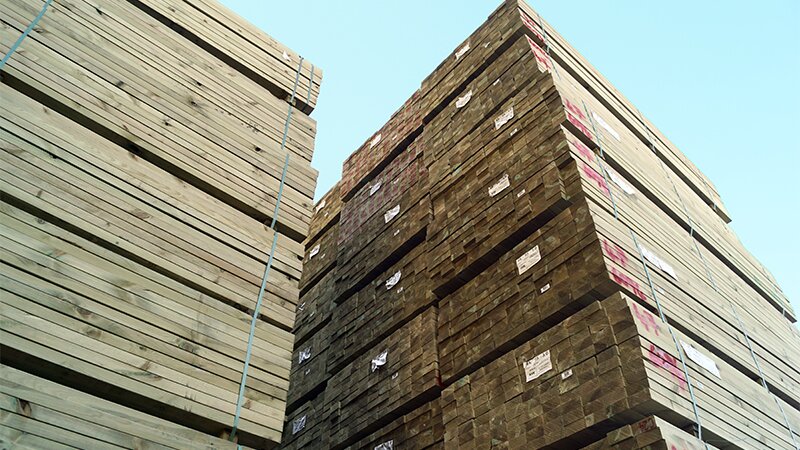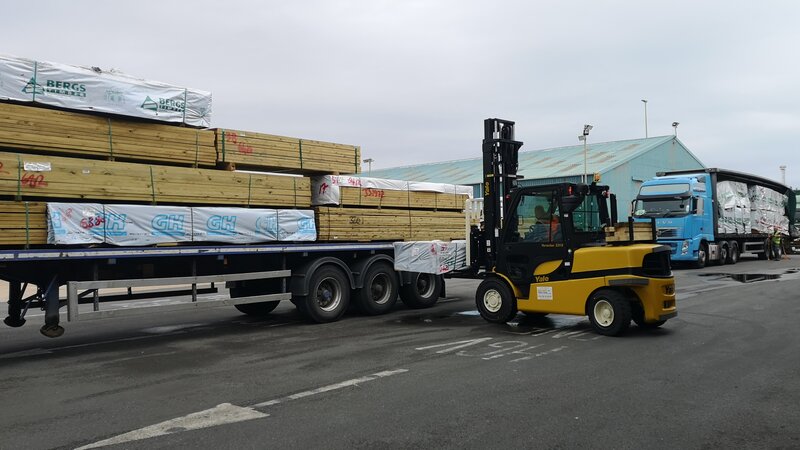Our apprenticeship scheme is now open! Learn more
5 October 2020


Shoreham Port, the largest timber handling port on the south coast of England, is supporting Wood for Good’s Wood CO2ts less campaign created by the UK timber industry to encourage the use of wood as a way to reduce CO2 emissions and fight climate change. As the largest timber handling port on the south coast of England, Shoreham Port is estimated to handle up to 20% of all UK timber imports, with extensive experience and equipment for timber handling.
Since 1993, Europe’s forests have been subject to Forest Europe’s guidelines, criteria, and indicators for sustainable forest management. The Highest majority of timber imported through Shoreham’s lock gates is FSC and PEFC certified, meaning it is sourced from sustainable and well-managed forests, in keeping with Shoreham’s EcoPort status.
As one of 11 PERS certified EcoPorts in the UK, Shoreham Port continually assesses its environmental impact to develop strategies that will improve the Port’s carbon footprint. Recent plans include the Port’s aim of reaching net-zero air quality emissions by March 2021 and net-zero carbon emissions by 2030, twenty years ahead of UK government’s net-zero carbon emission goal.
The industry-wide Wood CO2ts less campaign focuses on wood’s unique ability to reduce CO2 emissions. Trees capture CO2 from the atmosphere and store it as carbon, with experts reporting that each 1m3 of wood grown by a tree holds 0.9 tonnes of CO2 which is then sequestered from the atmosphere, stored in buildings and other wood products. Wood for Good also highlight the health benefits of using wood in construction as it has shown to boost physical and mental wellbeing when used in building homes and workplaces.
Samantha Woskett, Head of Customer Relations and Logistics commented “At Shoreham Port we are proud to work with valued Timber suppliers who source wood from sustainable forests, and we enthusiastically support Wood for Good’s fantastic campaign to encourage the use of wood in construction to capture carbon and reduce CO2 emissions.”
Sam continued “The timber industry continues its mission to educate the construction industry and government that not only are wood products comprehensive, evolving and aesthetically pleasing materials, but sustainable and environmentally focused from source to operation. For commercial enterprises, cost of materials will always remain a fundamental decision maker – however environmental credentials of materials now a key factor in procurement and building strategies.”
Sarah Virgo, Wood for Good Campaign Manager, commented “The government set a target for the construction industry to achieve net-zero carbon by 2050 but it’s not feasible for all sectors of the economy to become carbon neutral. To reach net-zero, we need to compensate for these emissions by finding ways of removing carbon from the atmosphere. The simplest way to contribute to this reduction is to consider wood first, instead of other materials.
Sarah continued “If we are to meet government targets and reduce climate change, we must act now. Everyone involved with the design and construction of a building, new or old, can play their part in tackling the climate emergency.”
For more information about Wood for Good’s CO2ts less campaign please visit their website here.
Category: Sustainability
